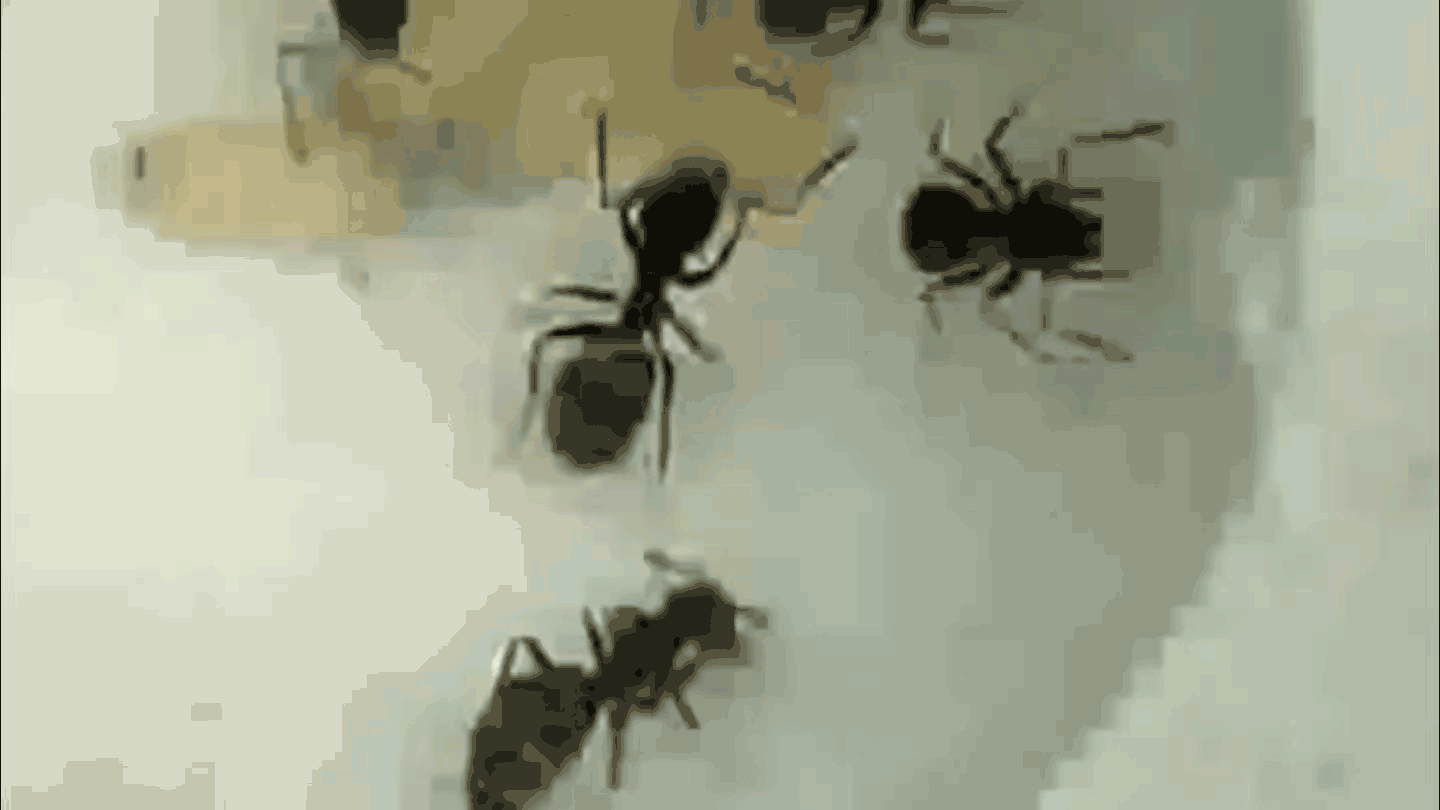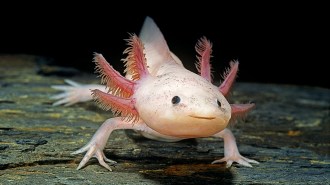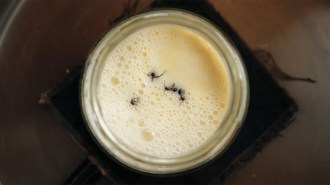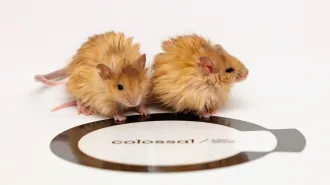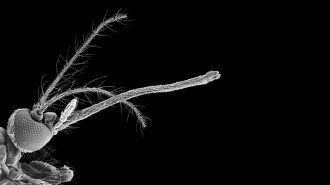Is camouflage better than warning colors? For insects, it depends
Defensive coloring's effectiveness may depend on light, prey populations and other factors
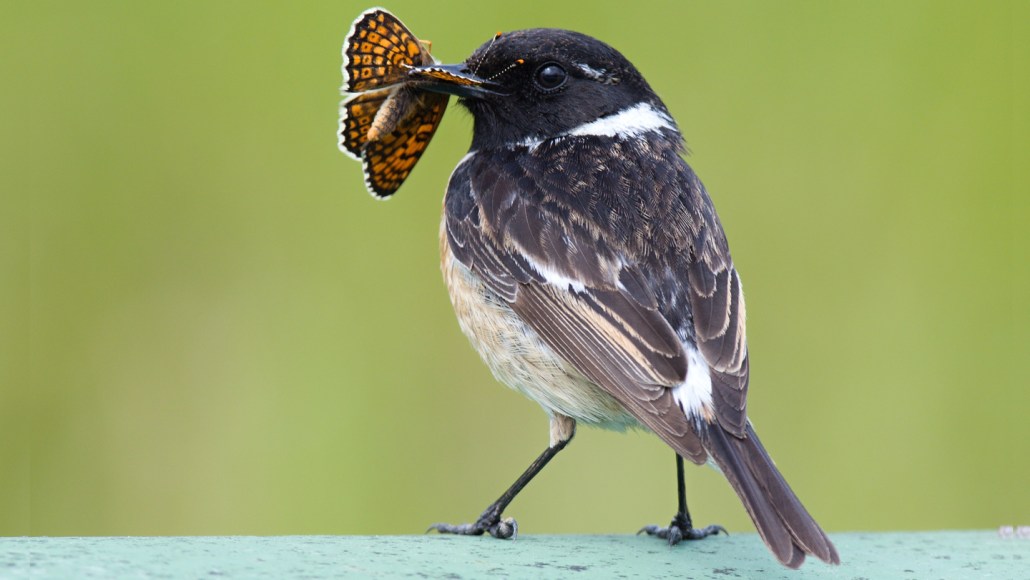
A European stonechat (Saxicola rubicola) eats a butterfly decorated in warning coloration. New research suggests the effectiveness of these colors may partially depend on the intensity of pressure from local predators.
Stanislav Harvancik
Prey animals can use their colors to hide from predators or dissuade them from attacking. But local conditions determine which option works best.
A global study comparing defensive coloration in insects reveals that camouflage and warning colors each excel under certain environmental conditions. The findings, published September 25 in Science, identify fundamental factors that may be driving the evolution of both strategies worldwide.
“This is the most comprehensive experimental study on warning signal success that I have ever seen,” says David Kikuchi, an evolutionary biologist at Oregon State University in Corvallis, who was not involved with the research. “It reveals patterns that have been previously hypothesized but not tested.”
From beetles to frogs, animals use either camouflage or bright colors that advertise a toxic surprise to avoid being eaten. “They are by far the most common strategies [using color] that animals use to defend from predators,” says Iliana Medina Guzman, an evolutionary ecologist at the University of Melbourne in Australia.
She and her colleagues were interested in the repeated and widespread evolution of these two approaches across the animal tree of life and why certain species develop one strategy over the other.
While smaller studies had investigated the effectiveness of each strategy in nature, a more complete answer requires substantially more environmental variation to tease apart the most influential factors, Guzman says. “It’s only achievable if we run the same thing across a lot of different types of forests and locations with different conditions.”
Her team conducted experiments in 21 wooded areas across six continents, from polar locations such as Finland and Canada to warmer forests in Kenya, Australia and Brazil. From 2020 to 2022, colleagues around the globe prepared more than 15,000 paper triangles simulating moths or butterflies.
Some were colored with orange-black warning striping — a typical palette for moth defensive colors — while others had an unusual bright turquoise-black pattern. A third set had barklike camouflage. The researchers attached mealworms to these mock moths as bait for local birds, then set them out in the forest, recording how many mealworms the birds ate over an eight-day period. The scientists also collected data on forest light levels along with predator and prey insect populations through bird and butterfly surveys.
Neither defense worked universally best, the team found. Rather, the relative protection of the mock moths depended on local factors. For instance, warning colors were more effective in places with few predators.
“That fits well with the theory that suggests that when competition is intense, the predators just have to go and eat whatever they can,” Guzman says. “[The color is] just attracting attention. It’s not working as a warning signal anymore.”
Kikuchi was surprised at how well the typical orange-black warning signal worked across various ecosystems.
“There is often quite strong selection against rather small deviations from local warning signals,” he says. Patterns that fall outside the local norm might not be recognized as warnings, theoretically leaving those aberrant insects undefended.
Light levels had little impact on the effectiveness of warning signals, though camouflage didn’t work as well in low light levels.
“If the habitat has big changes in light levels from things like logging, that could potentially have a very big impact on the community of prey,” Guzman says, possibly dampening the camouflage’s effectiveness and leading to more insects being eaten. “But [it] might not as badly affect the species that uses warning signals.”
The findings may mean that camouflage coloring could appear and disappear more readily over evolutionary timescales compared with the more resilient warning signals.
Guzman says she’s now curious to see how human transformations of the environment influence the relative success of these defensive strategies.
